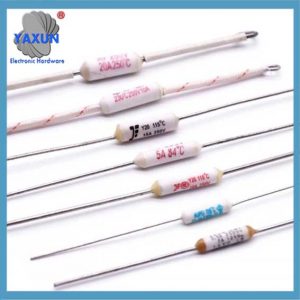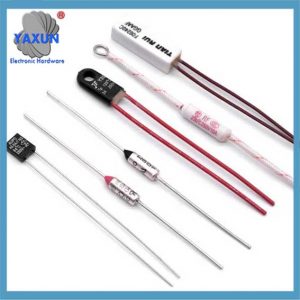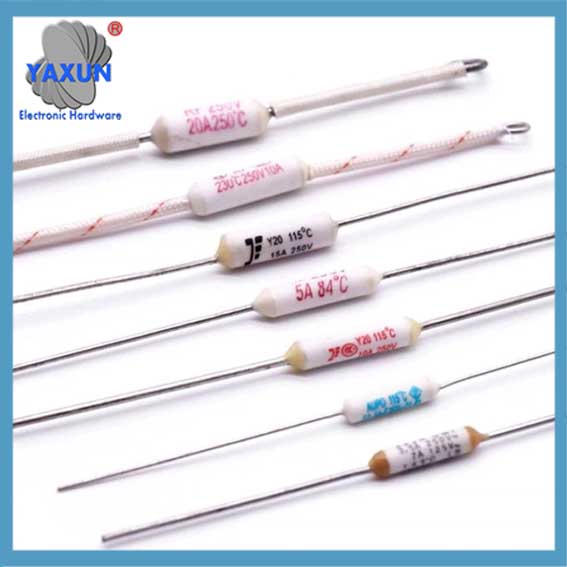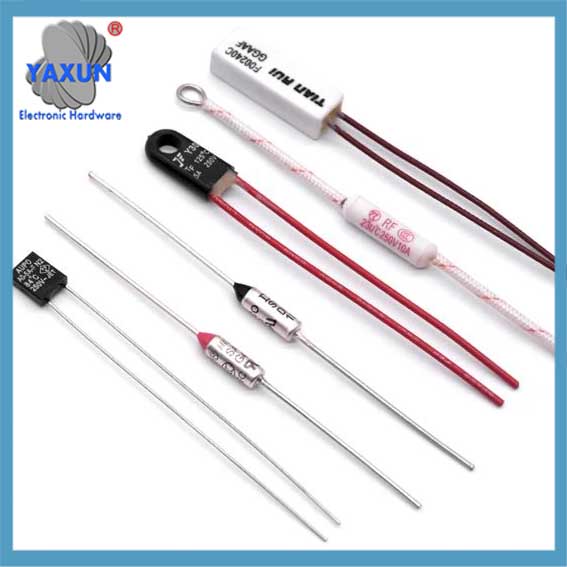Produktu kategorijas
- termiskais drošinātājs 32
- Virsmas stiprinājumi 12
- termistors 36
- PCB stiprinājuma drošinātāju turētājs 27
- Vadu instalācija 6
- Asmeņu drošinātāju turētāji 17
- termostats 50
- Elektriskais drošinātājs 24
- Automobiļu temperatūras sensors 7
- Termiskā ķēdes pārtraucējs 22
- Drošinātāju kastes īpašnieks 36
- Temperatūras sensors 75
- Termiskais slēdzis 68
- Automašīnu drošinātājs 20
- Skrūvējiet drošinātājus 8
Produktu tagi
Arlin F00240C 10A 240C termiskais drošinātājs GHD taisnotājam
Termiskais drošinātājs ir ļoti izplatīta elektroniskā sastāvdaļa, ko izmanto, lai aizsargātu elektromehānisko aprīkojumu no pārkaršanas. It is also called over-temperature protector, aizsardzība pret pārkaršanu, and temperature protection. The thermal fuse is placed close to the heating part of the electromechanical equipment and connected in series to the equipment power circuit or control circuit. When the temperature of the equipment rises to the rated value of the thermal fuse for some reason, the thermal fuse automatically melts and cuts off the equipment power supply circuit to prevent the equipment from being damaged due to overheating and protect the electromechanical equipment.
 Termiskais drošinātājs matu žāvētājam, elektriskais gludeklis, rīsu plīts, elektriskā plīts, transformators, motors |
 Termiskais drošinātājs matu taisnotāja aizsardzībai pret pārkaršanu |
 Arlin F00240C 10A 240C termiskais drošinātājs GHD taisnotājam |
Kā norāda nosaukums, the thermal fuse causes the internal temperature-sensitive material of the thermal fuse close to the equipment to deform when the temperature of the electromechanical or electrical equipment rises to the operating temperature (this value is specified by the thermal fuse manufacturer when manufacturing), thereby disconnecting the power supply circuit.
1. Marking: The manufacturer’s trademark, rated voltage and rated current should be clearly marked on the 240C Thermal Fuse shell.
2. Temperature characteristics: During the test, an indicator with a current of less than 10mA is used to display the circuit on and off.
3. Nominālā darba temperatūra (TF): Place the sample in a thermostat, keep it at TF-20℃ for 2 stundas, and then heat it up at a rate of 0.5~1K to the melting temperature. The melting temperature should be within the deviation range.
4. Keeping temperature (TC): Place the sample in a thermostat, apply a voltage not exceeding the rated voltage, and a load current of 10A. Place it at TC-6℃ for 168 stundas. After the test, the sample should not be melted or damaged.
5. Wet heat test: Place the sample at a temperature of 38-42℃, a relative humidity of 90%-95%, and a test cycle of 48 stundas. After the test, perform Article 3, which should meet the requirements.
6. Cold and hot shock: Place the sample in a -18℃ low temperature box, keep it for 15 minūtes, take it out and place it indoors for no less than 5 minūtes, then place it in a TF-20℃ thermostat for 15 minūtes, take it out and place it indoors for no less than 5 minūtes. After 3 cycles of testing, perform Article 3 test, which should meet the requirements of Articles 8 un 9.
7. Internal resistance: Measured between the two lead wires within 15 minutes including the shell, the internal resistance of the sample should be less than 5mΩ.
8. Izolācijas pretestība: After the sample is fused, the insulation resistance between the two leads measured with a 500V megohmmeter should be above 0.2MΩ.
9. Electrical strength: After the 4th test, 500V AC voltage is applied between the two leads for 1 minute, and no flashing or breakdown should occur.
10. Tension: Fix the sample and apply a 5Kg tension on the lead wire along the axial direction. After 10S, there should be no pulling or loosening.
11. Bending: Fix the sample and apply a force 6mm away from the shell. First bend the lead wire 45 degrees and return it to the initial position. There should be no breakage or cracking. (Only one end of the lead can be tested)
12. Appearance: The shell should be smooth, without cracks and mechanical damage; the lead should be bright, and the connection with the shell should be firm and not loose; the epoxy branch package should be smooth, without flow, and the lead should not be hanging on the branch.
Sazinieties ar mums
Gaidot jūsu e -pastu, Mēs jums atbildēsim 12 stundas ar nepieciešamo vērtīgo informāciju.
 English
English Afrikaans
Afrikaans العربية
العربية বাংলা
বাংলা bosanski jezik
bosanski jezik Български
Български Català
Català 粤语
粤语 中文(简体)
中文(简体) 中文(漢字)
中文(漢字) Hrvatski
Hrvatski Čeština
Čeština Nederlands
Nederlands Eesti keel
Eesti keel Suomi
Suomi Français
Français Deutsch
Deutsch Ελληνικά
Ελληνικά हिन्दी; हिंदी
हिन्दी; हिंदी Magyar
Magyar Bahasa Indonesia
Bahasa Indonesia Italiano
Italiano 日本語
日本語 한국어
한국어 Latviešu valoda
Latviešu valoda Lietuvių kalba
Lietuvių kalba македонски јазик
македонски јазик Bahasa Melayu
Bahasa Melayu Norsk
Norsk پارسی
پارسی Polski
Polski Português
Português Română
Română Русский
Русский Cрпски језик
Cрпски језик Slovenčina
Slovenčina Slovenščina
Slovenščina Español
Español Svenska
Svenska ภาษาไทย
ภาษาไทย Türkçe
Türkçe Українська
Українська اردو
اردو Tiếng Việt
Tiếng Việt



